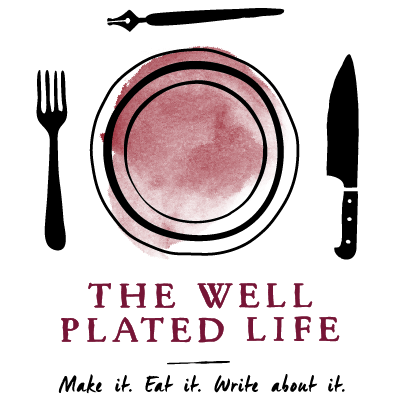Corn Bread or Muffins

When you cook professionally, over time you come to accept that some foods are nearly impossible to make in a way that makes everyone happy. Any family or ethnic recipe is a land mine for any cook not raised in that family or culture. Eggs at breakfast are another one. People want the eggs their Mom made, and since you’re not their parent, you’re likely to get it wrong more often than not. It’s not something you can take personally, cranking out meals from the hot line. If you’re lucky, the guest is good at describing what they’re after, the server is conscientious about bringing that information back to the kitchen, and you have a chance to meet and maybe exceed the guest’s expectations. Those are the good days.
Cornbread has a foot in this camp. It’s deeply ingrained in America’s culture and history. Any food that goes back thousands of years is going to have variations and adaptations over time and in different regions. In the south, it’s closer to its ancestor pone or hoe cake, a crisp, originally unleavened pancake or disk of fried cornmeal batter. Sugar? No way. Crisp outside, a little creamy inside, preferably cooked in bacon grease or lard, this version lives on in the mountain hollers of the Carolinas and rural home kitchens.
Further north, and partly as a result of a certain little blue box of mix born in 1930, a sweeter version took hold, cakier yet still a bit crumbly; a bit on the dry side, but all the better to gussy up with butter and honey. This style appeared in such items as Toaster Corn Cakes and in the rows of monster-sized muffins that were all the rage in the 80s.
The cornbread I use is closer to the latter version, but with its feet planted in the intensely corn flavor of the south’s beloved pone. It has a history of its own. It’s based roughly on the formula found in a classic book: Joe Amendola’s Baker’s Manual. Joe was one of the earliest instructors at the Culinary Institute of America. He ran his own bakery for years, and his book is a no-nonsense, immensely useful collection of recipes, troubleshooting, cutting diagrams, formulas and adaptations that he used in his business.
The recipe can be adjusted to your preferences. Use sugar or don’t. The amount given gives a subtle background sweetness that helps bring out the corn’s flavor. You can use all butter or a combination of butter and oil (or all oil). Using oil gives you a moister bread or muffin. You can gussy it up with 1 cup of add-ins, like cheese, hot peppers, corn kernels, bacon, or scallions.
It’s the perfect partner for Gumbo, to sop up every last drop of goodness from your bowl. All in all, cornbread (or muffins) are a welcome friend at just about any meal.
Cornbread
“Gritty” is not usually a positive term when referring to baked goods, but cornbread is by nature a slightly crumbly, toothy experience. In the south, white flour and sugar are anathema to purists, but in a supporting role, they bring out the best in cornbread. White flour is especially helpful to keep everything together if you want to gussy up your cornbread or muffins with corn kernels, cheese, or peppers.
1 1/4 cups (5 1/4 ounces, 149g) King Arthur Unbleached All-Purpose Flour
1 1/2 cups (7 1/4 ounces, 206g) whole grain cornmeal
1/4 cup (1 3/4 ounces, 50g) sugar, optional
2 teaspoons baking powder
1/4 teaspoon baking soda
3/4 teaspoon salt
1 1/4 cups (10 ounces, 280g) milk or buttermilk
1/4 cup (1 3/4 ounces, 50g) corn or vegetable oil
1/4 cup (2 ounces, 53g) unsalted butter, melted and cooled
1 large egg
1 cup combined add-ins of your choice: grated cheese, cornmeal, jalapeno or chili peppers, corn kernels
Preheat the oven to 375°F. Lightly grease a 9” square or round pan, a cast iron skillet, 1 1/2 quart casserole dish, or 12 muffin cups.
In a medium bowl, whisk together the flour, cornmeal, sugar, baking powder, baking soda, and salt. Stir in your choice of add-ins, if using.
Mix the combined wet ingredients into the dry, mixing just until everything is evenly moist. A Danish dough whisk is the perfect "toy" for the task.
In another bowl or large measuring cup, whisk together the milk, vegetable oil, melted butter, and egg. Pour the liquid, all at once, into the flour mixture, stirring quickly and gently until just combined.
Transfer the batter into the prepared pan, or scoop into the muffin tin.
Bake for 20 to 25 minutes, until the edges just begin to pull away from the pan and a paring knife inserted in the center comes out clean. Remove from the oven and cool for 5 minutes before cutting; serve warm.
Good things to know:
If you like crispy cornbread, reach for cast iron if you have it. Preheat the pan in the oven as it heats; when the batter is ready to go, grease the hot pan and immediately add the batter and put it in the oven to bake.
True grit: this recipe can be adjusted to be a little more cakey and less crumbly by cutting the cornmeal amount to 1 ¼ cups and increasing the all-purpose flour to 1 ½ cups.







